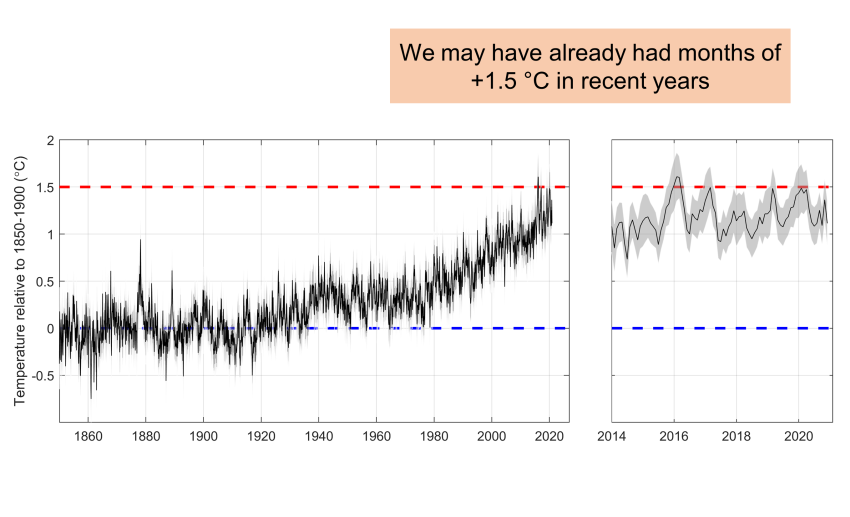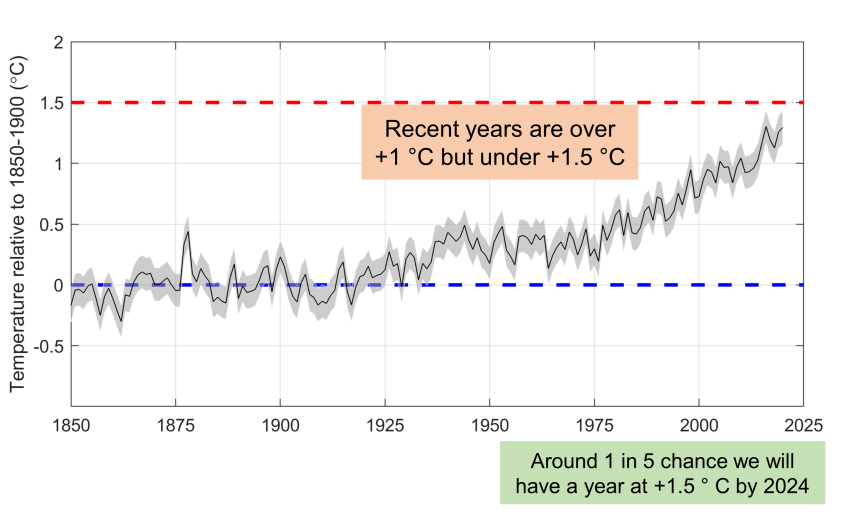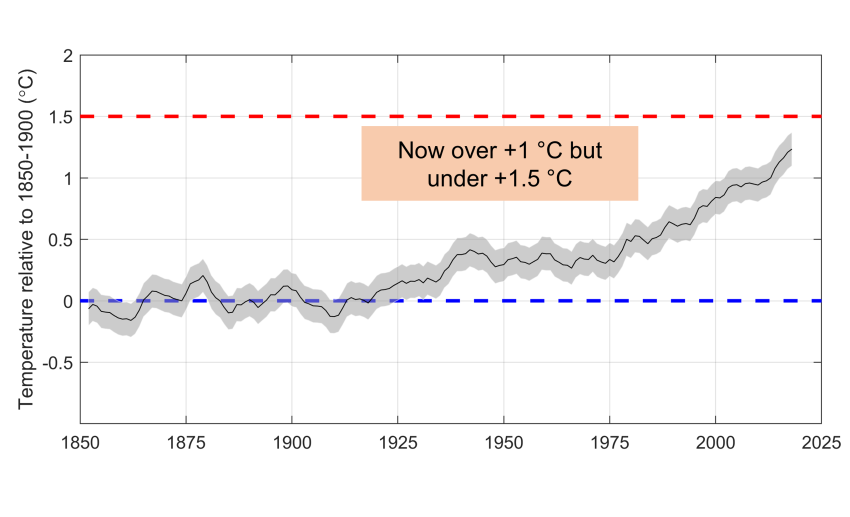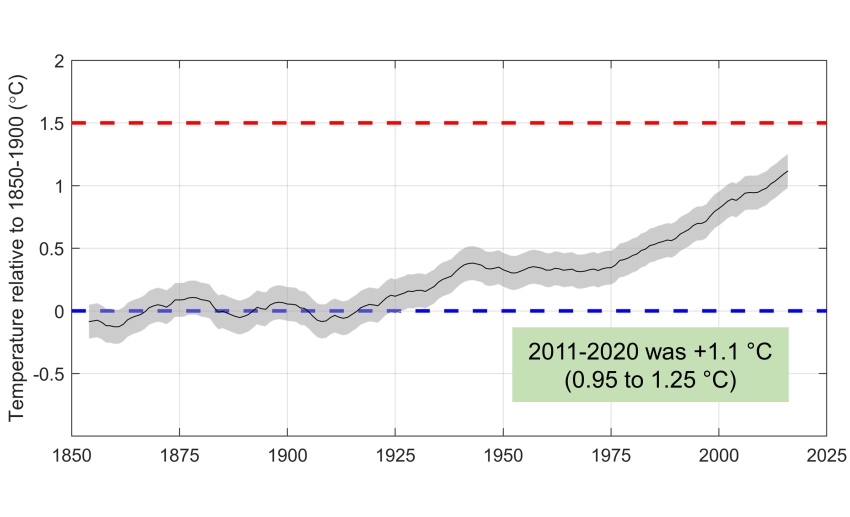Climate Change in Australia
Climate information, projections, tools and data
Current warming level
How far towards the global warming levels are we?
In 2020, the world (land and ocean) was at around +1.1 °C global warming since 1850–1900.
Reaching a global warming level means the climatological global mean surface temperature (GMST), averaged over land and ocean, is at or near that level relative to the baseline (reference period) chosen to represent the pre-indusrtrial climate: 1850–1900. Here we use the 10-year average temperature as a guide. Before then, the temperature of a month or a year might reach the warming level but then reduce again due to natural variability. As of late 2020, there is an estimated roughly 20% probability that we will experience a year at or over +1.5 °C by 2024 (WMO 2020).
Our path towards the various global warming levels can be visualised in a graph of global temperature relative to the 1850–1900 baseline. Climate researchers usually compare up to five different datasets of global average temperature, but for simplicity just the Berkeley Earth Surface Temperature dataset is used here (Rohde and Hausfather 2020). The estimated uncertainty in global temperature in this dataset in the 1850–1900 period is added as an uncertainty band through the whole graph, as an indication of the uncertainty in progress towards each level. This is a snapshot up to the end of 2020, further warming, as well as ongoing refinements to datasets will occur beyond 2020. Global Mean Surface Temperature (GMST) relative to 1850–1900 for different time windows is shown below, noting:
- Variability is higher for the shorter time windows such as monthly, meaning there are more peaks at or near the +1.5 °C threshold.
- Variability is more smoothed out for the longer time windows, showing the long-term trend towards the +1.5 °C climate more clearly.







